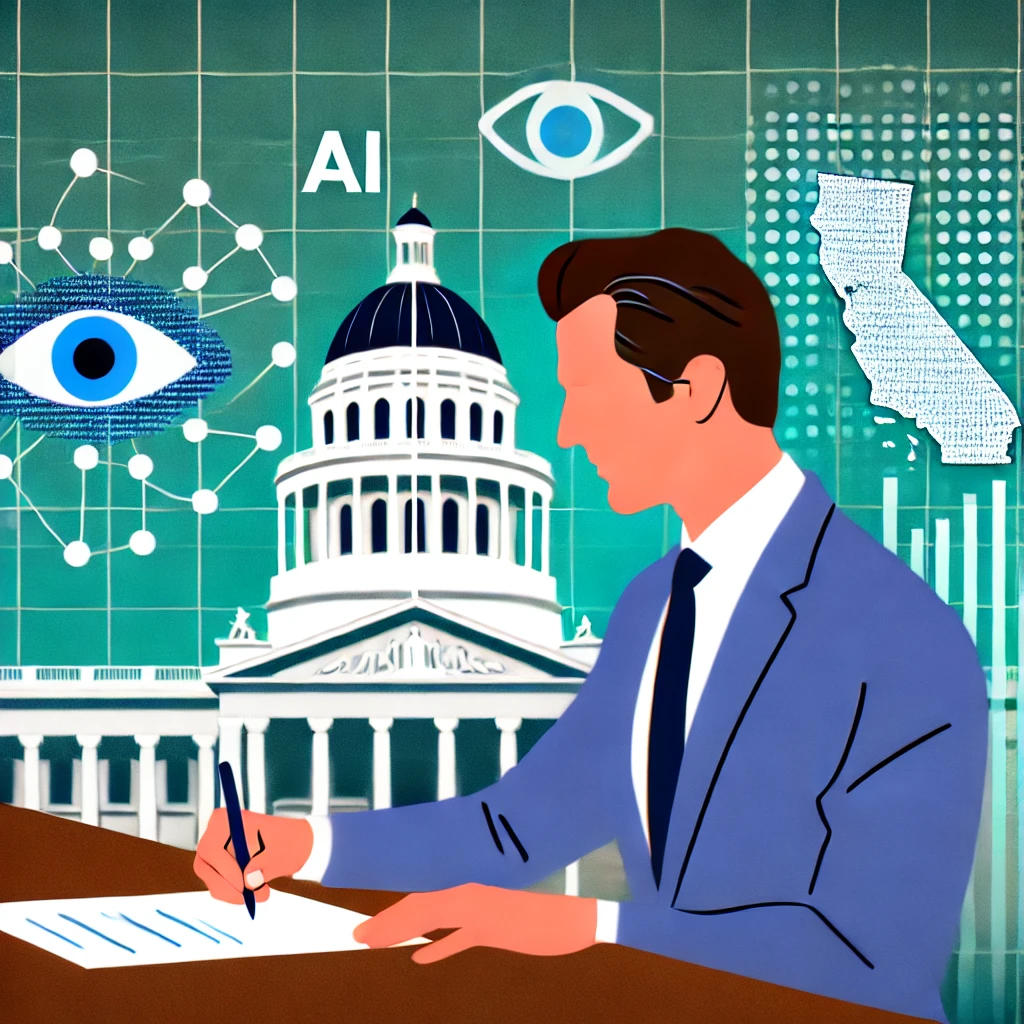California Governor Gavin Newsom on Thursday signed several new bills into law focused on regulating artificial intelligence (AI) and preventing the misuse of deepfakes. The legislation is part of California’s broader effort to address the challenges posed by rapidly evolving AI technologies, particularly in cases where they can be used to manipulate media and create harmful content.
Addressing Deepfake Technology
One of the key focuses of the newly signed legislation is to combat the misuse of sexually explicit deepfakes—AI-generated videos or images that superimpose someone’s face onto explicit content without their consent. These deepfakes, which can be disturbingly realistic, have been increasingly used to harass or defame individuals, often with devastating personal and professional consequences.
The bills signed by Gov. Newsom aim to strengthen protections for victims by making it easier to take legal action against those who create and distribute these manipulated images or videos. Under the new laws, victims of deepfake content can sue creators and distributors for damages, and platforms hosting such content may face penalties if they fail to remove it.
“Deepfakes are not just a violation of privacy but a serious tool for harassment and abuse,” Newsom said. “This legislation ensures California is leading the way in protecting people from the misuse of AI technology while promoting innovation in a responsible way.”
Strengthening AI Regulation
In addition to targeting deepfakes, the new legislation also addresses broader concerns about AI technology. As AI tools continue to become more sophisticated and widely accessible, concerns have grown about their potential for misuse. The new laws establish guidelines for the ethical use of AI in areas such as content creation, privacy, and transparency.
The legislation requires companies using AI to disclose when content has been generated or altered by AI, helping consumers distinguish between real and AI-generated media. These transparency measures aim to prevent the spread of misinformation and disinformation, which can be amplified by AI technology.
Protecting Privacy and Promoting Accountability
Another aspect of the new laws is focused on protecting individuals’ privacy and ensuring accountability for AI-driven decisions. As AI becomes increasingly integrated into areas such as hiring, law enforcement, and financial services, there is growing concern about bias and discrimination embedded in AI algorithms. The bills signed by Newsom require companies using AI to demonstrate fairness and accountability, particularly when the technology affects personal or financial decisions.
These laws make California one of the leading states in AI regulation, setting a precedent for how to address the ethical and societal impacts of artificial intelligence. Newsom emphasized that while AI holds great potential for innovation, its misuse can have serious consequences, and it is essential to create a legal framework that safeguards privacy, security, and fairness.
A Model for Other States
As AI continues to transform industries and influence daily life, California’s new laws could serve as a model for other states considering AI regulation. With Silicon Valley at the heart of the tech industry, California’s leadership in this space is expected to influence how AI is managed across the country.
Governor Newsom’s signing of these AI and deepfake bills into law represents a significant step in addressing the potential dangers of AI, while still fostering innovation and growth within the tech sector.
Conclusion
With the new AI and deepfake laws in place, California is taking a proactive approach to prevent the misuse of artificial intelligence. The legislation aims to protect individuals from the harms of deepfake technology, ensure transparency in AI-generated content, and promote responsible use of AI in various industries. As AI continues to advance, California’s new laws could serve as a blueprint for other states seeking to regulate this powerful and evolving technology.





